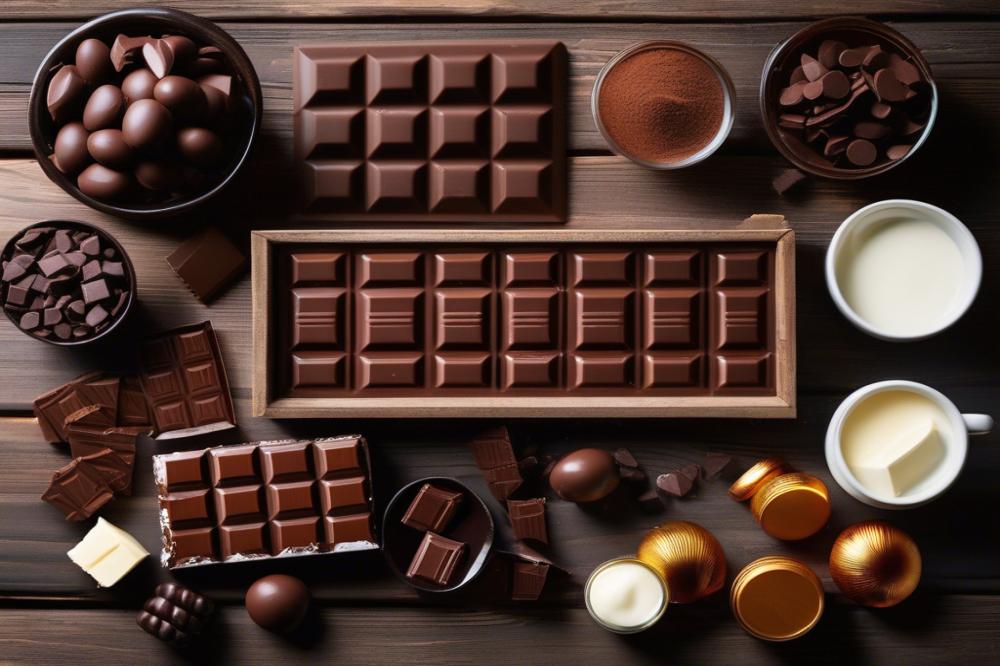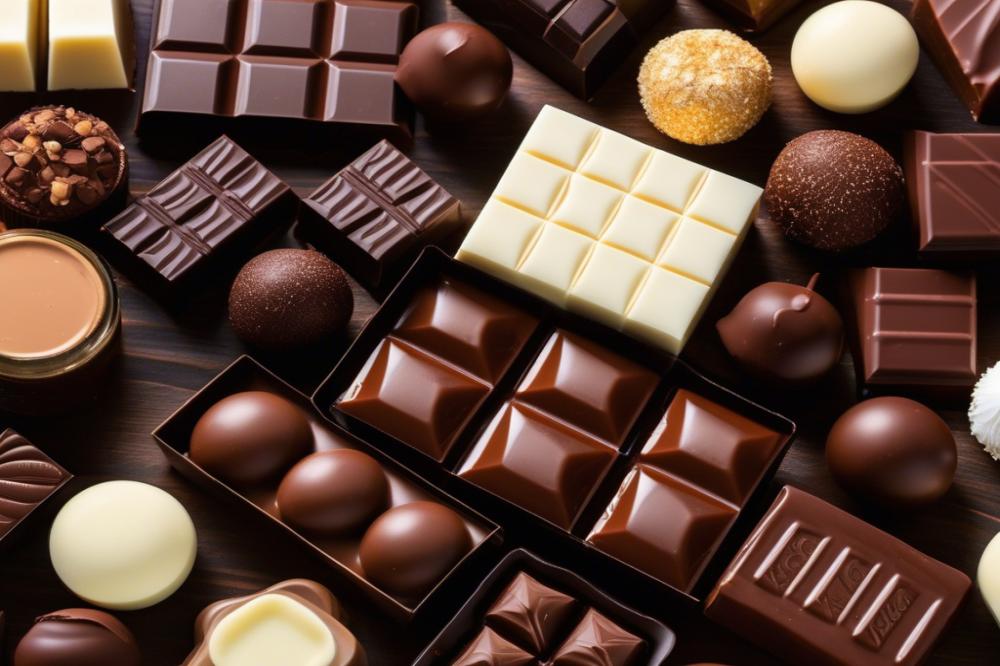Introduction
The chocolate industry is experiencing a surge in trends and innovations. Consumers are now more curious about what they consume, leading to a growing demand for artisanal chocolate. Craftsmanship and sustainability are becoming key focal points. chocolate varieties from around the world are being explored and celebrated in creative ways. At the same time, flavor combinations have taken center stage, as creators experiment with unexpected ingredients.
Diversity in Chocolate is not just a trend; it is essential for enriching the consumer experience. Each region contributes unique attributes, influenced by local cultures. Chocolate traditions vary immensely, shaping the flavors and techniques of production. Celebrating these differences creates opportunities for both education and connection among chocolate lovers everywhere.
Understanding Global Flavor Profiles is critical in this evolving landscape. Chocolate enthusiasts can now savor tasting notes that reflect cacao origins from places like Madagascar, Ecuador, and Ghana. Each region offers its own distinct sweetness, bitterness, and richness. By presenting these diverse sensory experiences, the chocolate community encourages appreciation for varied backgrounds and flavors.
Diversity in Chocolate

Defining Diversity in Chocolate
Chocolate offers a rich tapestry of flavors and experiences. It is far more than a single taste. Different regions contribute various characteristics that make chocolate distinct. Each piece tells a story influenced by its environment and culture. In this world, chocolate varieties vary significantly. Some chocolates are smooth and creamy, while others may be bold and complex.
Exploring Various Chocolate Varieties
Artisanal chocolate showcases the craft behind chocolate-making. Numerous varieties exist—from dark to milk and white chocolate. Each type brings its own personality to the table. Dark chocolate often carries a rich intensity. Spicy notes might pop up, adding excitement to a bar. Milk chocolate tends to be sweeter with a creamier finish. White chocolate, while technically not true chocolate, delights with its sweetness and smoothness. Regional chocolate creates a canvas for flavor combinations that captivate the taste buds.
The Impact of Cacao Origins on Flavor Profiles
Cacao origins play a crucial role in defining chocolate’s taste. Just like wine, the location where cacao is grown affects its flavor. For instance, beans from Ecuador might have fruity notes, while those from Madagascar can lend a zesty tang. cultural influences also shape how chocolate is consumed and enjoyed worldwide. Traditional chocolate traditions might include spices or other local ingredients. This blending creates exciting sensory experiences. Gourmet chocolate makers often highlight these nuances in their products. Tasting notes guide consumers toward unique flavors waiting to be discovered.
Cultural Influences on Chocolate

Chocolate is more than just a sweet treat; it’s a reflection of different cultures around the world. Each region has its own approach to chocolate production. These cultural influences shape not only how chocolate is made but also the flavors that emerge. For instance, Mexican chocolate often incorporates spices like cinnamon and chili. This adds a warm, bold character. In contrast, European traditions focus on smooth textures and rich tasting notes.
Traditional chocolate recipes from Around the World
Diverse recipes showcase the many chocolate varieties available globally. In South America, traditional recipes might include ground cacao mixed with water and sugar to create a drink called “xocolatl.” This beverage has roots dating back centuries. Similarly, in West Africa, rich chocolate is crafted into bars that highlight local fruits and nuts. These regional chocolate creations celebrate ingredients native to their surroundings, bringing unique flavors to each bite.
Impact of Cultural Practices on Flavor Combinations
Cultural practices play a major role in flavor combinations. In Japan, matcha and chocolate fuse to create an intriguing sensory experience. This blend isn’t common, but it speaks to Japan’s appreciation for balancing flavors. Countries like Belgium might emphasize gourmet chocolate known for its rich, creamy profiles. Here, the craft of artisanal chocolate reflects a deep commitment to quality and tradition.
In Indonesia, flavors are often enhanced with tropical fruits such as mango and coconut. This contrasts sharply with the straightforward luxury of Swiss chocolate, which may focus primarily on smoothness and digestions. Cultural preferences guide how chocolate is enjoyed, whether as a beverage, bar, or dessert. Combinations crafted with local ingredients not only highlight regional tastes but also connect communities through their chocolate traditions.
Regional Chocolate Varieties

Famous chocolate regions and their unique offerings
Chocolate is produced in a variety of regions around the globe, each contributing its own distinct characteristics. Mexican chocolate often features cinnamon and vanilla, reflecting the country’s culinary traditions. In West Africa, particularly Ivory Coast, large-scale cacao farms produce beans that are rich yet straightforward in flavor. Moving to South America, Peru offers chocolate with bright, fruity notes thanks to its diverse climate and soil.
Artisanal chocolate makers in these regions craft their products with care. They highlight the flavors derived from their specific cacao origins. For instance, Ecuadorian chocolate can have hints of floral notes, widely appreciated by chocolate enthusiasts.
Analysis of regional chocolate trends
Recent trends show a growing interest in single-origin chocolates. Consumers are becoming more aware of where their chocolate comes from. This has led to a rise in gourmet chocolate brands that emphasize the characteristics of their cacao beans. Bean-to-bar production is gaining momentum, allowing makers to control quality and flavor development.
Cultural influences heavily shape what chocolate tastes like. Traditional recipes and local ingredients often inspire unique flavor combinations. For example, some chocolatiers in Japan experiment by adding matcha or sake flavors, merging sweet with savory.
Highlighting artisanal chocolate from various locales
Artisanal chocolate makers play a vital role in celebrating diverse tastes. They often use old traditions while incorporating modern techniques. In Belgium, chocolatiers masterfully create pralines filled with surprising flavors, from florals to spices.
Not to be overlooked, Costa Rican chocolate features exciting sensory experiences. Local artisans embrace the sweetness of tropical fruits, combining them with rich dark chocolate for a taste that is unforgettable.
Overall, every region showcases its cultural traditions through chocolate. The tasting notes can vary from bitter to sweet, gentle to bold. Chocolate lovers can enjoy exploring these global varieties, each bite a journey across different landscapes and histories.
Gourmet Chocolate and Sensory Experience
Gourmet chocolate has become a symbol of luxury and indulgence. Understanding what makes it special can elevate any chocolate lover’s experience. This type of chocolate goes beyond the ordinary. It focuses on quality craftsmanship, ripe flavors, and an appreciation for cacao origins.
Chocolate varieties around the world showcase diverse tastes. Some chocolates are rich and dark, while others are creamy and sweet. Tasting notes play a significant role in defining each gourmet piece. For example, a chocolate from Madagascar might express fruity hints, while Peruvian chocolate could feature nutty undertones. Flavor combinations can transport one’s palate to different regions. It’s about more than just sweetness; it’s like a trip across the globe with every bite.
The Role of Sensory Experience in Enjoying Chocolate
Enjoying chocolate is a sensory experience like no other. The feel of a smooth piece melting on the tongue can be delightful. Smelling the rich aroma heightens anticipation before tasting. Each aspect of chocolate, from its texture to its fragrance, adds layers to the experience.
Artisanal chocolate often embodies this concept fully. Many makers pay attention to how their creations interact with the senses. The crunch of a cacao nib paired with a silky ganache can create an unexpected pleasure. Cultural influences also shape these sensory experiences. Different regions have distinct chocolate traditions that impact flavors and methods.
Regional chocolate can reveal much about its origins. Chocolatiers often highlight local ingredients to enhance their products. This can lead to one-of-a-kind creations that tell a story. For instance, chocolate infused with spices from India brings warmth and a kick to the palette. That fusion encourages a deeper exploration of taste and texture.
As such, the world of gourmet chocolate thrives on variety and exploration. Each tasting can be a delightful adventure. Enthusiasts are invited to delve into the sensory experience that chocolate offers. By embracing differences, chocolate lovers can truly celebrate the complexities of gourmet chocolate.
Innovations in Chocolate Flavor Combinations
Across the globe, chocolate is experiencing a flavor renaissance. Emerging trends in flavor experimentation are reshaping how we think about this beloved treat. Culinary innovators are pushing boundaries, introducing bold flavor combinations that mix traditional tastes with unexpected ingredients. For instance, pairing chocolate with spices such as cardamom or even chili pepper is gaining popularity. These dynamic combinations create memorable tasting notes that excite the palate.
Artisanal producers often draw inspiration from their cultural influences. With a focus on local ingredients, many are crafting regional chocolate that highlights flavors from their environment. The use of herbs, nuts, and exotic fruits can transform a simple chocolate bar into a sensory experience. Imagine tasting dark chocolate infused with lavender or orange zests. These unique blends tell a story, connecting consumers to the cacao origins they may never visit.
The Rise of Health-Focused Innovations
Health-conscious consumers are influencing the chocolate industry significantly. There has been a notable rise in health-focused chocolate innovations. Manufacturers are now creating gourmet chocolate that is lower in sugar and packed with superfoods. Ingredients such as matcha, chia seeds, and even adaptogenic herbs are becoming common. These additions not only enhance the flavor but also elevate the nutritional profile of chocolate.
More brands are promoting their selections as guilt-free indulgences. They cater to a market that seeks pleasure without compromising wellness. The result is a growing variety of chocolate varieties that appeal to the health-oriented consumer while maintaining deliciousness. Such innovations showcase the vast potential within chocolate, bridging the gap between indulgence and health.
Celebrating Chocolate Traditions
Exploring Traditional Chocolate Celebrations Globally
Chocolate plays a crucial role in many cultural celebrations around the world. In Mexico, for instance, the Day of the Dead features delicious mole sauce, which often includes chocolate. This traditional dish symbolizes life and death, connecting families with their ancestors. In Belgium, chocolate is central to many festivities, especially during the winter holidays. The warm drink brings people together and showcases regional chocolate varieties. Other countries, like Ghana, celebrate the cacao harvest with vibrant festivals, highlighting the importance of cacao origins to their communities.
The Significance of Chocolate in Cultural Festivities
Cultural influences deeply impact how societies celebrate with chocolate. In Switzerland, chocolate is both an art and a celebration. Gourmet chocolate makers produce exquisite treats for special occasions. Rituals involving chocolate often convey feelings of love and appreciation. In many cultures, gifting chocolate carries sentimental value. Events such as weddings or anniversaries frequently feature artisanal chocolate as a symbol of sweetness and joy. The emotional connections people have with chocolate are evident during these gatherings, making it an essential element of various cultural festivities.
Legacy and Evolution of Chocolate Traditions
The legacy of chocolate traditions is rich and complex. Over time, different regions developed their own chocolate styles and recipes. Flavor combinations vary widely depending on local ingredients and tastes. In Asia, spicy chocolate dishes reflect regional ingredients and culinary traditions. In contrast, European chocolate has a more buttery and creamy profile, offering different tasting notes. As global connections deepen, these traditions continue to evolve, merging old customs with modern flavors. Artisan chocolate makers often draw inspiration from traditional practices while experimenting with new ideas. This keeps cultural heritage alive while inviting innovation into the world of chocolate.
Reflecting on the Richness of Chocolate
Embracing different backgrounds and traditions in chocolate allows us to appreciate flavors we might never have tasted otherwise. Each chocolate variety around the world tells a story, shaped by historical events, local ingredients, and cultural influences. This diversity adds excitement and depth to what many see as a simple treat. Chocolate isn’t just a food; it’s a journey through global traditions.
Looking ahead, the chocolate industry is poised for growth in exciting ways. Trendsetters are introducing more innovative flavors that reflect local cuisines. We are likely to see more sustainable practices, and this will be vital for a healthier planet. Consumers increasingly desire ethically sourced chocolate that respects the environment and the people who grow it. These preferences may lead to a wider range of products that celebrate ethnic culinary techniques.
Now is a perfect time to explore the global chocolate scene. Taste the unexpected flavors from different corners of the world. Sample the rich, spicy notes from Mexican chocolate or the fresh, fruity accents found in Southeast Asian varieties. Each bite can transport you to another culture, allowing you to experience what chocolate means in other parts of the globe. Don’t hesitate to embrace this unique adventure. Chocolate offers a world of flavors just waiting to be discovered.



